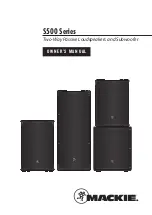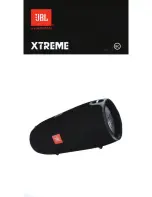
9
< ! /
Touch, with the electrode fastened, in the
electrode holder, the work piece until the arc
! / 1 _
` /
Avoid hammering the workpiece with the
electrode since it may loose the coating
#!J!$>*#X*&'*#>$X&>[!\J"]$?=&*X
- After striking the arc keep feeding the
electrode into the weld pool with an angle of
]
! "
of the arc can also be controlled by lifting or
! 0 -
tion of the welding angle may increase the
size of the weld pool improving the capacity
- At the end of the weld let the slag cool off
<
CAUTION:
Protect your eyes when hitting the slag
with the chip hammer to avoid damages.
CAUTION:
A bad start can be due to the dirty wor-
kpiece, a bad connection between earth
cable and work piece, or the bad faste-
ning of the electrode in the electrode
holder.
7.0 QUALITY OF THE WELD
The quality of the weld will depend mainly on
the ability of the welder, on the type of weld
and on the quality of the electrode: Choose
the proper electrode before attempting to
weld, paying attention to the thickness and
!
Correct welding current.
If the current is too high the elctrode will burn
fast and the weld pool will be wide irregula-
'
too low you will lack power and the weld pool
! !
Correct arc length.
If the arc is too long it will cause spatters and
! '
! -
/ !/
Correct welding speed.
The correct welding speed will consent to
achieve a weld of proper width, without wa-
8.0 TIG WELDING
The TIG process uses the electrical arc
struck between the tungsten electrode of the
!/
In TIG welding the torch is always con-
nected to the negative pole of the welder.
Welder preparation:
- Select TIG welding thru the Selector on
- Connect the earth cable to the positive
pole of the welder and the earth clamp to the
!/
- Connect the TIG torch to the negative
pole of the welder and the gas hose to the
^'*+9<9"&'*\#XX_#!?#==`$9!&>9=-
led using the knob on the torch handle.
Use inert gas (argon ) only.
<
"
9.0 TIG WELDING BY SCRATCH ARC
- Ensure the electrode at the torch nozzle,
[ < \
electrode is sharply pointed with an angle of
[<]
- Set the welding current considering the
thickness of the material to be welded and of
the diameter of the tungsten electrode to be
- Open the gas valve on the torch handle,
! =!
Cover your face with the head shield, bring
the torch to within 3-4mm of the work, and
[\ -
!/ 13
Scratch the tip of the electrode until an arc
develops, quickly withdraw the electrode and
J<[
! " !
!/
REMEMBER to turn OFF the gas immediate-
!
Summary of Contents for W200
Page 13: ...12 1 3 ª µ µ µ 1 3 J ª ...
Page 14: ...13 1 3 1 3 ª 1 3 º 1 J3 1 3 J ...
Page 15: ...14 1 3 1 3 1 3 ...
Page 16: ...15 1 3 1 3 À ª À J ...
Page 18: ...17 ª µ 1 3 ...
Page 19: ...18 1 3 J ª 1 3 Á Á ª 1 3 º Á Â Á 9µ µ µ µ J Â Á Â Â Á Â Â Á Â J Â Á Â Â Á Â 8 7 1 2 5 6 3 4 ...
Page 20: ...19 Á 1 3 1 3 Ã µ µ º ...
Page 21: ...20 J 1 3 À J 3 J 3 Å Æ J 0 Å 2 X 4 ...
Page 32: ...31 13 0 PARTS DRAWINGS EXPLOSIONZEICHNUNG W130 ...
Page 34: ...33 14 0 PARTS DRAWINGS EXPLOSIONZEICHNUNG W160 ...
Page 36: ...35 15 0 PARTS DRAWINGS EXPLOSIONZEICHNUNG W200 ...
Page 38: ...37 16 0 WIRING DIAGRAM SCHALTPLAN W130 PCB1 PCB2 PCB3 FAN 220 230V 50 60HZ TA HALL PROBE ...
Page 39: ...38 PCB1 PCB2 PCB3 FAN 220 230V 50 60HZ TA HALL PROBE 17 0 WIRING DIAGRAM SCHALTPLAN W160 ...
Page 40: ...39 18 0 WIRING DIAGRAM SCHALTPLAN W200 ...
Page 41: ...40 HITACHI HITACHI Á HITACHI W130 HITACHI W160 Ú µ Á µ Å µ Å Å J Å 1 3 1 3 1 3 1 3 Ë ...
Page 42: ...41 9 0X9 µ µ µ µ µ µ 1 3 µ µ µ Å ...
Page 43: ...42 ÀÀÀÀÀÀÀ ÛÛÛÛÛÛÛÛÛÛ ÛÛÛÛÛÛÛÛÛ ÛÛÛÛÛÛÛÛ ÛÛÛÛÛÛÛÛÛÛÛÛ ...
Page 45: ...77611267 ...











































